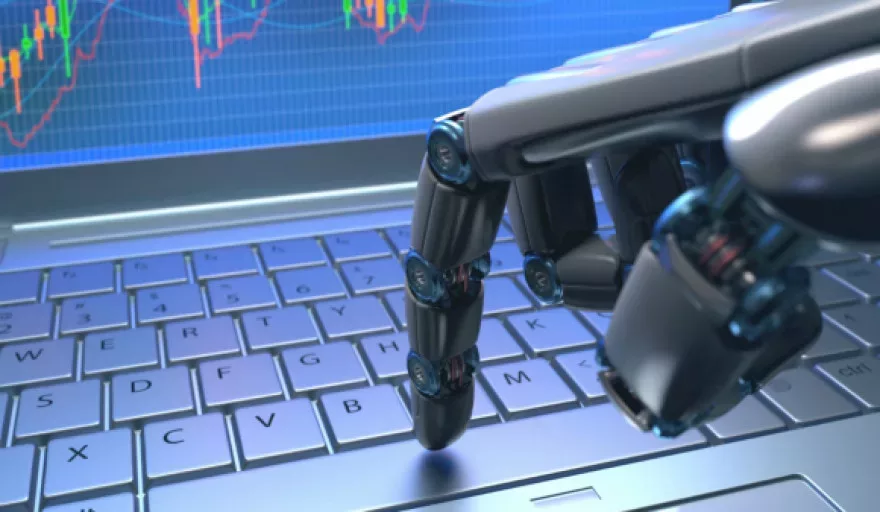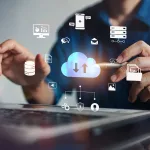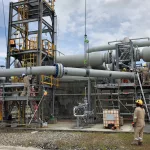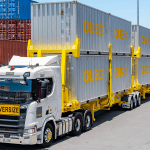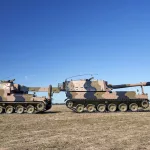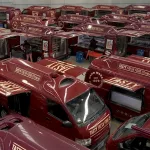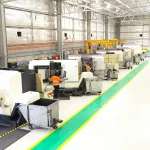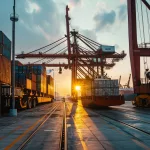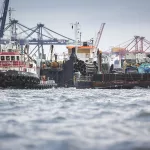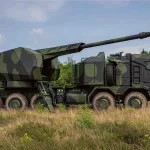Dr Vivian Balakrishnan, Minister-in-Charge of the Smart Nation Programme Office in Singapore, talks to APAC Outlook about the future of digitisation in Asia.
Anyone surveying the media landscape can see that digitisation and its technologies have a seemingly unstoppable momentum, even in corporate supply chains. But many businesses are still working with the same organisational, IT, and management structures. How long can this go on? What impact will digitisation actually have on supply chains? And what does this mean for those who work in the fields of global trade, logistics, supply chains and IT?
“Everything that can be digitised will be digitised.” This bold prediction was made by German Chancellor Angela Merkel, who spoke at the Economic Council’s annual Economic Conference in June, 2015. In Asia-Pacific, it has been forecast by Navigant Research that annual smart city technology investments will almost quadruple by 2023, reaching US$11.3 billion. Even now, according to a recent report by Forrester, more than 70 percent of Asia-Pacific enterprises already have an Internet of Things (IoT) solution in place or are in the process of implementing one.
Dr Vivian Balakrishnan, Minister-in-Charge of the Smart Nation Programme Office in Singapore, in his opening address at IoT Asia 2015, predicted that “the Internet of Things (IoT) is going to be the tsunami of the IT revolution, with an estimated 30 billion devices installed by 2020”. By comparison, only two billion personal computers and two billion smartphones have currently been deployed.
WHAT IS DIGITISATION?
In spite of the fact that ‘digitisation’ is a widely used term at global trade and logistics events, no consensus definition exists. The Merriam-Webster dictionary defines ‘digitise’ as ‘to convert (as data or an image) to digital form’. In contrast, in 2011, market research firm Gartner defined digitisation as “the use of digital technologies to change a business model and provide new revenue and value-producing opportunities”. Rather than attempting the impossible of defining what exactly digitisation is and is not, Gartner decided that this concept would be easier to grasp in terms of understanding the value to individuals and businesses who harness technology to enhance their competitiveness and success.
According to Strategy&, the consulting business arm of PricewaterhouseCoopers (PwC), an entire generation, Generation C (“connected”), will have grown-up in a primarily digital world by the year 2020. Exponential growth in IT applications, the increased affordability of smart devices, and improved internet speed and access have led to higher demand for connected devices. These are able to sense, communicate and share information, providing a wealth of possibilities in decision-making, status monitoring and activity planning. This is the Internet of Things (IoT).
WHY NOW?
Driven by innovations such as 3D printing, big data, sensor technology and cloud computing, digitisation is becoming increasingly critical to adding value for businesses across a range of industries.
A prominent example is Industry 4.0, which originated in Germany and has now achieved global resonance. The term refers to the fourth industrial revolution, which has the potential to transform value chains and significantly impact the business models of key industries. It is a platform that enables the sharing of information amongst all parties in the value chain, resulting in a system in which processes are fully integrated and information can be exchanged in real-time.
A potential realisation of this development is a ‘smart’ factory: a flexible production facility with the potential to fulfil custom, single-unit orders at a unit cost comparable to mass production. This requires an integration of not only the plants and equipment themselves but also the materials they process and parts they produce. Such a system would manage its own systems and processes intuitively, in which people merely monitor and intervene where necessary.
At IoT Asia 2015, Dr Balakrishnan spoke of how the falling unit price of each IoT node will fuel the explosion in the number of smart objects with hyper connectivity. He also warned that those nations who do not prepare now will face major disruptions and be left behind. Singapore is technologically advanced enough to lead the world in many niche segments. One of its major strengths is the integration of microtechnologies into products, such as photonics.
CUSTOMS OF THE FUTURE
Even though digitisation is moving forward at a breakneck pace, one of the things that threatens to slow down its momentum, if left unchecked, is the lack of defined or established standards. This is how important data standardisation is, as without standards, devices cannot communicate with one another.
According to ‘The Internet of Things in Logistics’, a 2015 report by DHL and Cisco, the operational efficiency of logistics processes could be greatly enhanced in the next 10 years if IoT is used to integrate millions of shipped, tracked, and stored goods in real time. It also sees a potential of US$1.9 trillion in revenue growth and cost savings for the supply chain and logistics industry in the coming 10 years.
With warehousing, the integration of pallets and goods offers the potential for smarter inventory management. In goods transport, the IoT provides faster, more reliable shipment tracking with greater transparency. Applying analytics to an integrated fleet could make it possible to automatically control maintenance intervals and eliminate unplanned vehicle breakdowns.
As the logistics industry continues to unlock and achieve higher levels of operational efficiency with the further development of the IoT, we can begin to imagine the ease and efficiency of customs clearance in the future. Every article and package could be embedded with the relevant foreign trade data and then automatically, autonomously communicate this information to the appropriate authorities at every station along the supply chain.
Furthermore, once in effect, the recently completed Trans-Pacific Partnership (TPP) agreement will improve the efficiency of trade among the 12 Pacific Rim countries involved, with transparent procedures that will move goods efficiently across borders. What makes the TPP potentially game-changing is that all customs laws, regulations, and procedures will be made readily available online, so that the information is easily accessible by businesses. Within the TPP, rules also will be put in place to ensure that government regulations in TPP markets will not impede cross-border data flows, or impose unnecessary localisation requirements.
THE HUMAN ROLE IN DIGITISATION
As businesses and supply chains move towards increased digitisation, management and organisational structures need to be re-examined. The roles of employees are under scrutiny as these developments unfold. The questions that inevitably arise are: Where do humans fit in the businesses and supply chains if machines, means of transport, and goods all run on automation? Will humans still have a role to play in the future and if so, what kind?
Here, opinions diverge: According to Professor Shantanu Bhattacharya, Academic Director of the Doctor of Innovation and Doctor of Business Administration programs at the Singapore Management University, “the role of people will change, but there will still be a need for people. We will always need people for the most complex jobs and the running of these machines”.
But not everyone is so optimistic. According to Brian Prentice, VP of Gartner Research, IT’s disruptive influence and the subsequent labour reduction effect of digitisation will have major social repercussions in the coming years. This will trigger “a quest for new economic models in several mature economies”.
THE DIGITAL REVOLUTION
The skills of today’s technicians may lose their value, but other qualifications may also gain in value as production becomes more complex and requires greater expertise to manage. In light of this, training and continuing education are becoming more crucial than ever. Employees should learn about Industry 4.0 and keep up with the latest developments and take action to boost their qualifications.
Digitisation is still quite some way from being fully-integrated and implemented. The reality is dominated by a mix of electronic and paper-based processes, and organisational structures are often characterised by functional and geographic silos that fail to exchange information openly.
This leaves a good number of questions still open for customs specialists, IT directors, and logistics and supply chain managers. But the trend toward digitisation has begun and seems irreversible. Now is most certainly the time to embrace the challenges and make the necessary changes so businesses can future-proof their success in the digitisation age.
Writer: Frans Kok, General Manager, AEB Asia-Pacific

